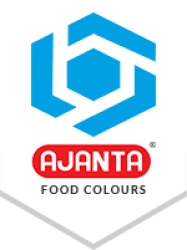Poland has become a global player in manufacturing and trade. The country shares its land borders with Germany to the west, the Czech Republic and Slovakia to the south, Ukraine and Belarus to the east, and Lithuania and Russia to the northeast. It also shares sea borders with Denmark and Sweden across the Baltic Sea.
The manufacturing sector of Poland is one of the largest in Europe and heavily contributes to the country’s GDP. In the manufacturing of any product, there are various components that play a crucial role. Some help in the manufacturing of the product, while others improve the visual appeal of the product. In this, colours play a crucial role by making the products appealing to customers, which attracts their attention and boosts the product sales and brand recognition in the market.
In Poland, manufacturers prepare colours, but they are not sufficient to fulfill all the colour-related demand of the country, so they import colours from other countries as well. Many major colour distributors, merchants, and traders import colours from countries such as India, China, and the Netherlands. These colours are often sold at higher prices in Poland, which allows them to earn profits on each sale. Some sell the colourants under the same brand name they bought, while others create their own labells and sell under their own branding.
Polish Industries Where Colours Play a Vital Role
In Poland, there are various manufacturing industries in which colours play a crucial role. Some of the key industries include:
Food and Beverages Industry
In Poland’s food manufacturing industry, colour plays a crucial role. It makes the food products appealing and attractive for customers, which attracts their attention and boosts sales. However, manufacturers in Poland often face various challenges in selecting the right colour for their products. They want high-quality food colours for their products that do not fade or change over time and maintain the appearance of the products. In this, synthetic food colour can be the best option for Poland’s food and beverage manufacturers. Synthetic food colours do not fade or change on products during the manufacturing and storage of the products, which maintains their visual appeal for a long time. Most of Poland’s food and beverage manufacturing industries are located in Warsaw, Kraków, Wroclaw, Poznan, and Lódz. According to Statista, the revenue of Poland’s food market amounts to US$77.20bn in 2025, and it is expected to grow annually by 5.58% (CAGR 2025-2030).
Cosmetics Industry
Colours are an important component of cosmetic and personal care products that make these products, such as lipsticks, eyelashes, blushers, creams, body lotions, and mascaras. These colourful cosmetic items attract the attention of consumers, which encourages them to make a purchase. However, cosmetic product manufacturers often face challenges in selecting the right colour for their products. They want premium quality pigments or dyes, which makes their product appealing for a long time. Cosmetic manufacturers can achieve this by using synthetic cosmetic colours in their products, as these colours come with a premium quality that maintains the cosmetic item's appearance during manufacturing and storage. Most of the cosmetics manufacturing industries of Poland are located in Warsaw, Lódz, Kraków, Wroclaw, and Gdansk. According to Statista, the revenue of the Beauty & Personal Care market in Poland is projected to generate a revenue of US$5.89 billion in 2025, and it is expected to grow with an annual growth rate (CAGR) of 3.63% through 2030.
Pharmaceuticals Industry
In Poland’s pharmaceuticals manufacturing industry, colours play a crucial role. Colour makes the medicines appealing, which helps in their differentiation that reducing the chances of taking the wrong medicines. Colours also reduce the chances of spoiling medicine and maintain their appearance. However, Poland’s pharmaceutical manufacturers often face some challenges in selecting the right colour for their products. They want stable and safe colours for their pharmaceutical products. Poland’s pharmaceutical manufacturers can overcome their problems by using synthetic food-grade colours in their products. These colours come with premium quality that ensures the stability and safety of medicines. In Poland, most of the pharmaceutical manufacturing industries are located near Lódz, Wroclaw, Poznan, Szczecin, and Bydgoszcz. According to Statista, the revenue of the pharmaceutical market of Poland is approximately $12.58 billion in 2025, and it is expected to grow at 3.50% annually through 2029.
Chocolates Industry
Colours play an important role in the chocolate manufacturing industry of Poland. Colour makes the chocolates appealing, which attracts the attention of consumers, especially children and women, who are the prime customers of chocolate products. However, Polish chocolate manufacturers often face some challenges in selecting the right chocolate colours. They can overcome their challenges by using high-quality synthetic food colour in their products. These colours improve the visual appeal of chocolates and do not fade or change over time, which increases the sales of the chocolate products. In Poland, most of the chocolate manufacturing industries are located in Warsaw, Kraków, Poznań, Lódz, and Wrocław. According to Statista, the revenue of the Confectionery market amounts to US$9.16bn in 2025, and it is expected to grow annually by 6.06% (CAGR 2025-2030).
Animal Feed Industry
Colour also plays a crucial role in Poland’s pet food manufacturing industry. Colour makes the feed appealing to animals, which attracts their attention and encourages them to eat properly and stay healthy. It also improves the brand recognition of the product in the market, which increases the product's sales. Still, pet food manufacturers in Poland often face challenges in selecting the right colour for their products. They want high-quality colours that do not fade or change on products over time, and make the product fresh. Polish pet food manufacturers can overcome their problems by using premium quality synthetic food colour in their products, as these colours maintain the visual appeal and stability during manufacturing and storage. Most of the pet food manufacturing industries are located near its big cities like Kraków, Gdansk, Bydgoszcz, Szczecin, and Torun. According to Statista, the revenue of the pet food market of Poland is projected to be US$1.83 billion in 2025, and it is expected to grow at an annual compound growth rate (CAGR) of 4.05% between 2025 and 2030.
Cultural Preferences of Colours in the Polish Market
In Poland, colours are an important part of daily life, traditions, and product choice. Polish people often choose colours that are natural, elegant, and meaningful. In the food products, they prefer yellow, red, green, and blue because these colours show freshness and strength. In cosmetic products, soft and natural shades are mostly preferred for daily usage, while bold and vibrant colours are used on festival or wedding occasions. In chocolates, rich browns with gold or orange tones are favoured, while in pharmaceuticals, white, blue, and green, which are clean, are viewed as safe so that consumers can feel secure in their decision. Polish manufacturers know these cultural favourites and manufacture their products accordingly to boost their product sales in the Polish market.
Regulatory Guidelines on Colours in the Polish Market
Colours that are sold in Poland must be approved by its government body. In Poland, the Chief Sanitary Inspectorate (Glówny Inspektorat Sanitarny – GIS) oversees the quality and safety of colours used in food and cosmetics, while the Office for Registration of Medicinal Products, Medical Devices and Biocidal Products (URPL) regulates colours used in pharmaceuticals. These regulations on colours ensure the safety and quality of colours for human consumption in products.
Starting a new business in Poland is also a challenging task. There are various challenges they often face, like competition with the brand that is already in the market, colour stability, the product’s visual appeal, and customer trust. Startups can overcome their challenges by using high-quality synthetic food colours in their products. Synthetic food colours come in various shades that help businesses to create unique coloured products that help them to stand out in the competitive market. Synthetic food colours are also an affordable option for large-scale manufacturing that helps startups to sell their products at competitive prices.
If you are a manufacturer or startup business that operates in Poland and is looking for high-quality colours that help your product to stand out in the competitive market and boost sales, so you can go with Ajanta Food Colours, a leading synthetic food colour manufacturer with over 75 years of legacy. The company offers a wide range of supra synthetic food colours, food-grade colours, and lake colours at affordable prices.
For the quality and safety of its colourants, Ajanta received various awards and certificates from India and other countries where Ajanta exports its high-quality, premium range of colourants. Some of the awards and certificates received by Ajanta Food Colours for its colourants are includes the Arch of Europe Award, the Bureau of Indian Standards (BIS) Award, certifications from the Food Safety and Standards Authority of India (FSSAI), the US Food and Drug Administration (US FDA), as well as Halal, Alcumus ISOQAR, Star-K Kosher, Food Safety System 22000 (FSSC 22000), and ISOQAR certifications, among others.
To know more about Ajanta Food Colours and its high-quality range of colourants, or for any other information, please contact us today!





_1759723432.jpg)